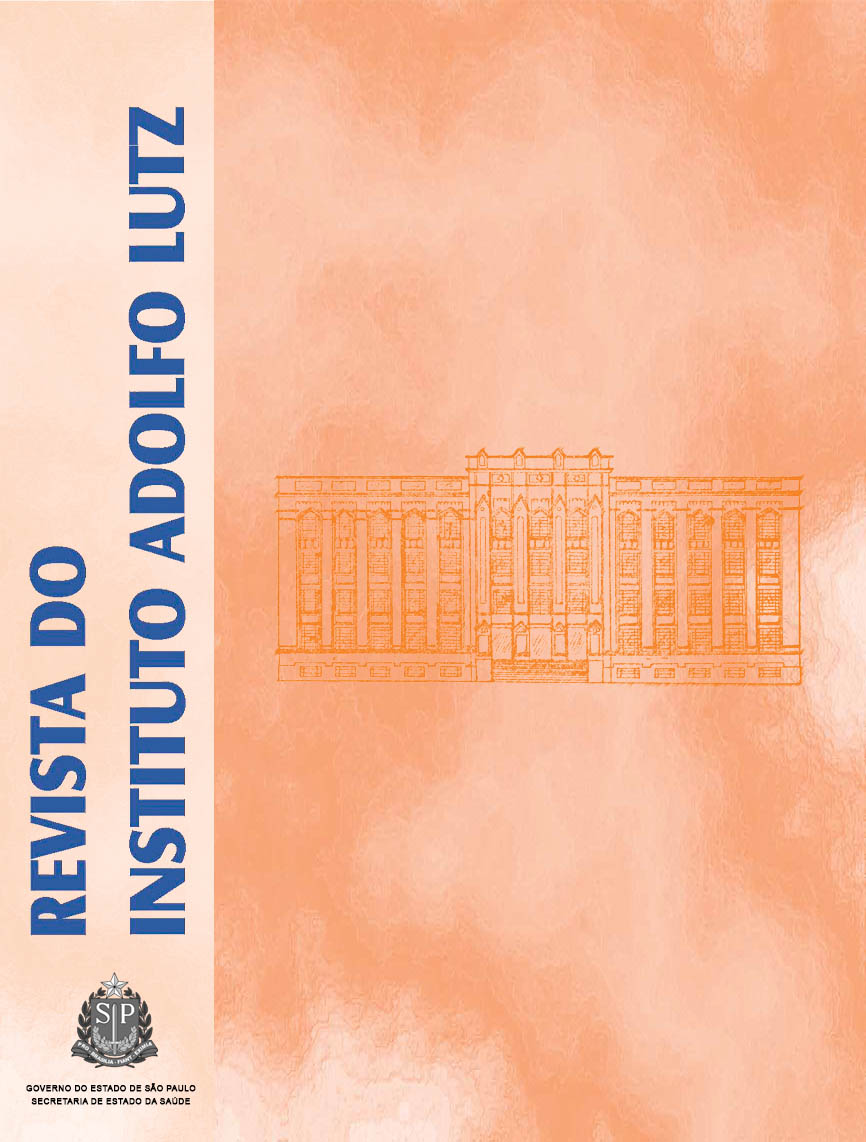Abstract
Fenitrothion is an organophophorus insecticide of moderate toxicity to mammals, which is used in agriculture to control insects on some cultures and on stored grains. ANVISA/ Brazilian Ministry of Health established the fenitrothion maximum limit residue (MLR) of 1.0mg/kg in wheat. The aim of this investigation was to verify this compound residues in white wheat flour to comply the São Paulo State Health Programme “Programa Paulista 2006”. For this purpose a survey of fenitrothion residues was carried out in 62 flour samples from varied market sites and bakeries of São Paulo State, collected by Sanitary Surveillance Service from April to June 2006. Fenitrothion residues were determined by means of gas chromatography with flame photometric detection (GC-FPD). Recovery studies were performed at two different levels, 0.05 e 0.50mg/kg, and the mean recoveries on the established levels were between 93% - 113% and 78% - 91%, respectively. The limit of detection was estimated as 0.02mg/kg, and the limit of quantification was 0.05mg/kg. The data showed values of fenitrothion lower than the established MRL to wheat (1.0mg/kg), which corroborate the needs to establish MRL for processed products, such as wheat flour. MRLs are the basis for calculating the daily dietary consumption of pesticides. They also provide factual data for estimating the daily pesticide residue intake by a person that consumes its usual diet (Acceptable Daily Intake).References
1. World Health Organization. Sekizawa J, Eto M, Miyamoto J, Matsuo M. Environmental Health criteria133. Fenitrothion. International Programme on Chemical Safety. Published under the joint sponsor ship of the United Nations Environment Programme, the International Labour Organisation, and the World Health Organization. World Health Organization Geneva, 1992. http://www.inchem.org/documents/ehc/ehc/ehc133.htm. Acessoem 20/03/2007.
2. Agência Nacional de Vigilância Sanitária/Ministério da Saúde http://www.anvisa.gov.br/toxicologia/monografias/f05.pdf. Acesso em 21/02/2007.
3. Trigo-Brasil. Série Histórica da área plantada. Safras 1976/77 a 2006/07. www.conab.gov.br/conabweb/download/safra/TrigoSerieHist.xls. Acessoem 20/03/2007.
4. Limma Junior. Paraná: Trigo segue indefinido nos Campos Gerais (PR) (16/04/07) http://www.paginarural.com.br/noticias_detalhes.asp?subcategoriaid=12&id=65950. Acesso em 13/06/07.
5. IBGE http://www.ibge.gov.br/home/estatistica/populacao/condicaodevida/pof/2002/pof2002.pdfacessado em 22/03/07.
6. Fenitrothion (037). www.fao.org/ag/agp/agpp/pesticid/JMPR/download/89/fentrothion.pdf. Acessoem 05/06/07.
7. Agência Nacional de Vigilância Sanitária/Ministério da Saúde, Portaria nº03, item 1.5.4 de 16/01/1992.
8. Resolução ANVISA/MS RDC nº 216 de 15/12/2006 D.O.U. - Diário Oficial da União; Poder Executivo,de 18 de dezembro de 2006.
9. Inspectorate of Health Protection. Analytical methodsfor pesticide residues in food stuffs. Part I –Multiresidue Method. 6 ed. The Hague/ Rijswijk, TheNetherlands: Ministry of Public Health, Welfare andSports; 1996.
10. Codex Alimentarius. Pesticide Residues in Food. Methods of analysis and sampling. Volume 2A. 2 ed., part 1, Roma; 2000.
11. Horwitz W, Kamps LR, Boyer KW. Quality assurancein the analysis of foods for trace constituents. J Assoc Off Anal Chem. 1980; 63(6): 1344-54.
12. Toledo HHB et al. Manual de Procedimentos, Estudo dos Resíduos com Plantas. Parte A. Associação GARP; 2002.
13. Holland PT, Hamilton D, Ohlin B, Skidmore MW. Effects of storage and processing on pesticide residues in plant products. 1994; Pure & Appl Chem 63: 335-56.
14. Vásquez-Castro J A. Resíduos de fenitrotion e esfenvalerato em grãos de milho e trigo, em algunsde seus produtos processados e sua ação residual sobre Sitophilos oryzae (L.,1763), Sitophilos zeamasMotsch.,1855 (Coleóptera: Curculionidae) e Rhyzoperthadominica (Fabr.,1792) (Coleóptera: Bostrichidae). 2006; Piracicaba: ESALQ Tese doutorado. 214p.
15. Uygun U, Koksel H, Atlin A. Residue levels of malathion and its metabolites and fenitrothion in post-harve sttreated wheat during storage, milling and baking. 2005; Food Chem 92:643-7.
16. Firmino A, Baptista GC, Trevizan LRP. Monitoramento de Resíduos de Pesticidas em Farinha de Trigo. Rev Bras Toxicol. 2003; 16 (supl1): 34.
17. Caetano AC, Baptista GC, Trevizan LRP, Cerri F, Jaquier AM. Monitoramento de Resíduos de Pesticidas em Farinha de Trigo. In: XIV Encontro Nacional de Analistas de Alimentos. 2005; Goiânia-GO, CT/RS-12, 128.

This work is licensed under a Creative Commons Attribution 4.0 International License.
Copyright (c) 2007 Instituto Adolfo Lutz Journal
